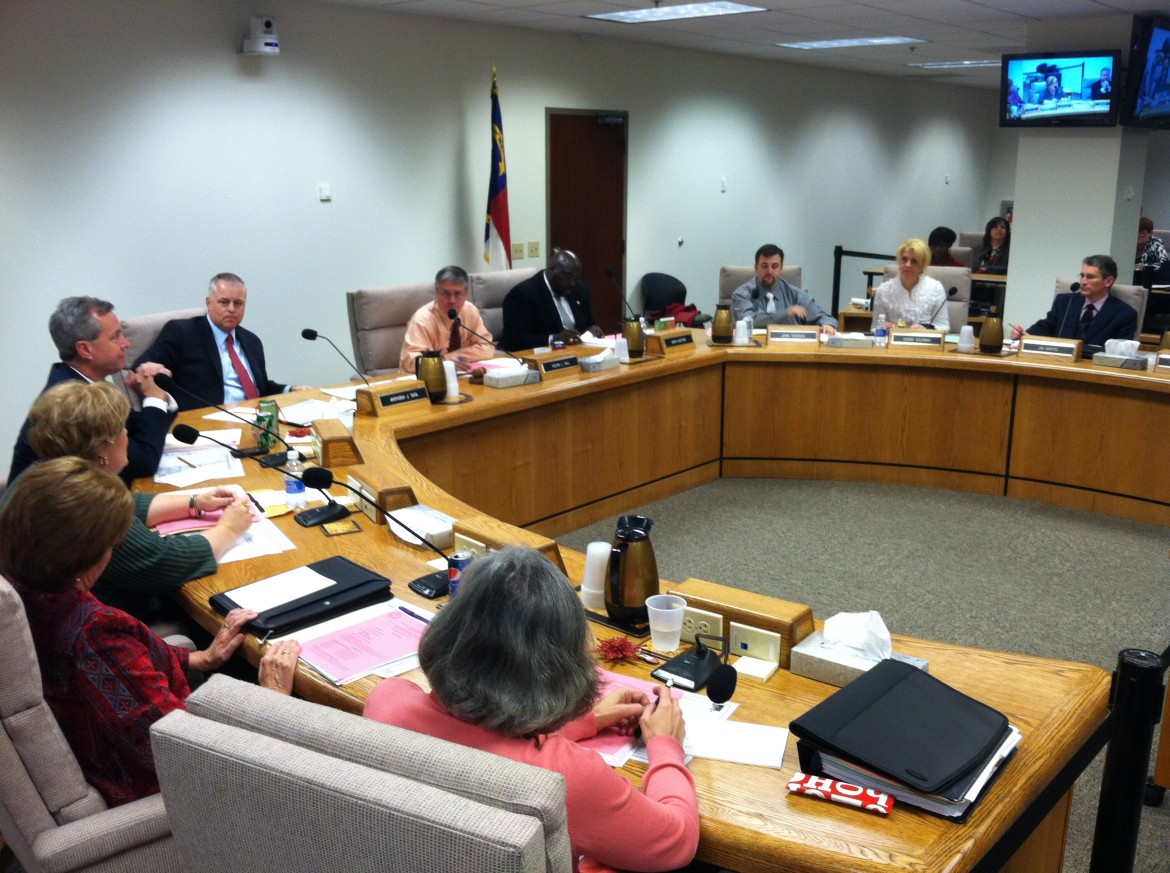Even if this fall’s school board elections felt like a definitive conclusion for student assignment, don’t expect that battle to be over for quite some time.
With a Jan. 3 work session on student assignment right around the corner, changes are likely to be coming to the new choice assignment plan, courtesy of the new Democratic board majority. But it’s anybody’s guess as to how much the plan will change and how long it will take.
Democratic board members insist the work session is to better evaluate and understand the plan, not change it.
“We’ve got to start by getting answers to a lot of questions, a lot of details, costs,” newly elected Democratic board member Jim Martin told the Record. “We’re going to start with information. The whole talk of change has to come after you have clear information.”
(If you’re interested in understanding more about the plan see Part one, two and three of an explainer series the Record did last month.)
Moreover, any decision to change the plan will partially be influenced by the staff’s opinion as to how difficult the changes will be to make.
Board Chair Kevin Hill said going forward “staff will explain to us the repercussions of any changes that might be recommended.”
While some changes are inevitable at some point in the future, Hill says it’s his feeling that the plan will still stay on track to be implemented in 2012-13.
“But keep in mind, I’m one of nine board members,” he added.

New Board Chair and Vice-Chair Kevin Hill and Keith Sutton now have seats at the head of the table.
How much weight does Republican muscle lift?
The board now stacks up five Democrats to four Republicans. Last year a four-member Democratic minority was able to rein in, with a strong network of community support, the GOP neighborhood schools plan.
“It’s concerning,” said Republican board member John Tedesco on the possibility of changes to the plan. “Especially, since parents have already begun the choice process. I think it would be somewhat concerning for those families and somewhat disruptive for families.”

All ages come out to protest Carpenter Village's assignment to East Cary Middle School. Parents claim it's their seventh-closest middle school.
If Tuesday’s board meeting was any indication of community activism to come, Tedesco’s Republican minority will have some degree of backing — but it might not be the kind it’s hoping for.
At Tuesday’s meeting about 35 people — families from Carpenter Village in Cary — came out to protest the fact that their middle school option wasn’t proximate enough. In other words, the current plan doesn’t look enough like neighborhood schools.
In fact, Tuesday was one of the first times neighborhood school supporters and diversity advocates were in agreement when they took the podium during the public comment period—all wanted Superintendent Tony Tata’s choice plan put on hold.
Two potential changes to consider
Since the plan was first approved in October, Hill has made very clear which aspects he does not support.
Currently, children in low-performing nodes have preference when applying to high-performing schools in their area. But Hill wants set-aside seats at those schools to guarantee a place for children from historically low-performing areas.
“I can’t negotiate on the issue of student achievement,” Hill said when he voted against the plan in October.
But Tedesco is already touting that a change along those lines would be unacceptable.
“It completely changes the model actually, because what it does is it establishes a quota system and restricts capacity at local neighborhood schools and in communities,” Tedesco told the Record this month.
Under the new plan, once a family chooses a school they will be admitted based on a formula derived from a set of priorities. The priorities are based on the board’s assignment policy, which the Republican majority changed last year to reflect proximity as the most important factor in assignment.
Accordingly, proximity is high on the list of priorities and balancing student achievement is near the bottom.
It’s possible that the new Democratic majority will consider moving around the priorities, which, at least on the surface, wouldn’t seem like it would change the framework of the plan.
“I think it’s one of many things we’ll look at,” said newly elected board member Susan Evans, who defeated former Chair Ron Margiotta in the Western part of the county.
Budget
Under Ron Margiotta’s leadership the former majority (in a party line vote that nearly saw Debra Goldman vote with the minority) was content to not ask for an increase in funding from the Wake County Board of Commissioners last year.
The new Democratic-led board will almost certainly ask for more money this year, but they’ll be asking for it from a Republican controlled county commission, which may be wary of an increase in funding.
